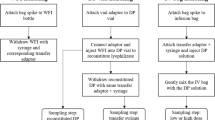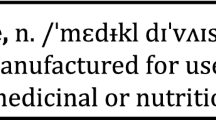Summary
AFTER prolonged dialysis of citrated platelet-free non-contact plasma against isotonic saline, its behaviour on recalcification alone and in the presence of added platelets, tissue thromboplastin, and long-chain fatty acids was relatively unchanged, but in the presence of a glass surface its behaviour was quite different. Unlike native plasma or citrated plasma, dialysed plasma was insensitive and could be incubated in glass apparatus with little or no contact activation, the amount of change induced being inversely proportional to the duration of the dialysing process. When such dialysed plasma was exposed to glass in the presence of ionised calcium at suitable low concentration, contacting occurred and coagulation on subsequent full recalcification in siliconed apparatus was much accelerated. With calcium citrate the contact activity induced was proportional to the concentration of calcium during the glass-contact stage. The total activity was related to the ionic strength of the electrolytes in the plasma test mixture. The system was sensitive to the monovalent cation species present, sodium being appreciably more active than potassium in promoting coagulation.
Similar content being viewed by others
References
Arthus, M. and Pages, C. 1890. Nouvelle théorie chimique de la coagulation du sang. Arch. Physiol. norm. path.
Bergsagel, D. E. 1955. Viscous metamorphosis of platelets. Morphological platelet changes induced by an intermediate product of thromboplastin formation. V Kongress der Europ. Ges. für Hâmatol., Freiburg i. B., Berlin. Springer, p. 755, 1956.
Bermingham, Margaret A. C., Boggust, W. A. and O’Meara, R. A. Q. 1968. Lipids and phospholipids in blood coagulation. Nature 218, 695
Biggs, Rosemary and Douglas, A. S. 1953. The thromboplastin generation test. J. Clin. Path. 6, 23.
Biggs, Rosemary and Macfarlane, R. G. 1962. Human blood coagulation and its disorders. 3. Oxford, Blackwell.
Biggs, Rosemary, Douglas, A. S. and Macfarlane, R. G. 1953. The initial stages of blood coagulation. J. Physiol. 122, 538.
Boggust, W. A., O’Meara, R. A. Q. and Fullerton, W. W. 1968. Diffusible thromboplastins of human cancer tissue. Europ. J. Cancer. 3, 467.
Bordet, J. and Gengou, O. 1901. Recherches sur la coagulation du sang. Ann Inst. Pasteur 15, 129.
Bordet, J. and Gengou, O. 1903. Recherches sur la coagulation du sang. Ann. Inst. Pasteur 17, 822.
Ferguson, J. H. 1937. An intermediary calcium complex in blood coagulation. Amer. J. Physiol. 119, 755.
Frank, A. L. and Holyoke, E. D. 1968. Tumor fluid thromboplastin activity. Int. J. Cancer 3, 677–681.
Freund, E. 1888. Uber die Ursache der Blutgerinnung. Wien. med. Jahrb. 3, 259.
Fullerton, W. W., Boggust, W. A. and O’Meara, R. A. Q. 1967. Antithromboplastic and thromboplastic activities of fatty acids. J. clin. Path. 20, 624.
Haanen, C, Hommes, F., Benraad, H. and Morselt, G. 1961. A case of Hageman factor deficiency and a method to purify the factor. Thromb Diath. Haem. 5, 201.
Hardisty, R. M. and Margolis, J. 1959. The role of Hageman factor in the initiation of blood coagulation. Brit. J. Haematol. 5, 203.
Holyoke, E. D. and Ichihashi, H. 1966. The C3H/St/Ha mammary tumor. 1. Thromboplastin content. J. natn. Cancer Inst. 36, 1049.
Jaques, L. B., Fidlar, E., Felsted, E. T. and Macdonald, A. G. 1946. Silicones and blood coagulation. Canad. med. Ass. J. 55, 26.
Laki, K. and Suba-Claus, E. 1966. Quoted by Laki, K. and Yancey, S. T. in Fibrinogen, 1968, 360, ed. Laki, K. London: Arnold; New York: Dekker.
Laki, K., Tyler, H. M. and Yancey, S. T. 1966. Clot forming and clot stabilising enzymes from the mouse tumour YPC-l. Biochem. biophys. Res. Commun. 24, 776.
Lüscher, E. F. 1956. Viscous metamorphosis of blood platelets and clot retraction. Vox Sang 1, 133.
Macfarlane, R. G. 1964. An enzyme cascade in the blood clotting mechanism, and its function as a biochemical amplifier. Nature 202, 498.
Margolis, J. Initiation of blood coagulation by glass and related surfaces. J. Physiol. 137, 95.
Margolis, J. 1958. Activation of plasma by contact with glass. Evidence for a common reaction which releases plasma kinin and initiates coagulation. J. Physiol. 144, 1.
Margolis, J. 1958. Activation of Hageman factor and P.T.A. with glass: applications to the laboratory diagnoses of deficiency. VII Congr. int. Soc. Haematol. Rome. No. 354, 283.
Morawitz, P. 1905. Ergebn. Die Chemie der blutgerinnung. Ergebn Physiol 4, 307.
Nolf, P. 1948. The coagulation of the blood. Medicine 17, 381.
Nossel, H. L. 1964. The contact phase of blood coagulation. Oxford, Blackwell, 25, 78.
Nossel, H. L, Wilner, G. D. and Le Roy, E. C. 1969. Importances of polar groups for initiating blood coagulation and aggregating platelets. Nature 221, 75.
O’Meara, R. A. Q. 1958. Coagulative properties of cancers. Ir. J. med. Sci. 394, 474.
O’Meara, R. A. Q. 1964. Fibrin formation and the growth of spontaneous cancers in man. Bull. Soc. int. Chir. 23, 30.
O’Meara, R. A. Q. and Jackson, R. D. 1958. Cytological observations on carcinoma. Ir. J. med. Cci. July, 327.
Quick, A. J. 1940. Calcium in the coagulation of the blood. Amer. J. Physiol. 131, 455.
Ratnoff, O. D. and Colopy, J. E. 1955. A familial haemorrhagic trait associated with a deficiency of a clot-promoting fraction of plasma. J. clin. Invest. 34, 602.
Ratnoff, O. D. and Davie, E. W. 1962. The activation of Christmas factor (F.IX) by activated plasma thromboplastin antecedent (activated F.XI). Biochem. 1, 677.
Ratnoff, O. D., Davie, E. W. and Mallett, D. L. Studiesin the action of Hageman factor: evidence that activated Hageman factor in turn activates plasma thromboplastin antecedent. J. clin. Invest. 40, 803.
Rosenthal, R. L, Dreskin, O. H. and Rosenthal, N. 1953. New haemophilia-like disease caused by deficiency of a third plasma thromboplastin factor. Proc. Soc. exp. Biol. N.Y. 82, 171.
Sabbatini, L. 1900–1901. Calcium et citrate bisodique dans la coagulation du sang, de la lymphe et du lait. Arch. Ital Biol. 36, 397.
Sharp, A. A. 1958. Viscous metamorphosis of blood platelets: a study of the relationship to coagulation factors and fibrin formation. Brit. J. Haematol. 4, 28.
Soulier, J. P. and Laurieu, M. J. 1958. Déficit en 3ème facteur prothromboplastique plasmatique. Rapports entre le P.T.A. et le facteur Hageman. Thromb. Diath. haem. 2, 1.
Soulier, J. P. and Prou-Wartelle, O. 1960. New data on Hageman factor and plasma thromboplastin antecedent. The role of contact in the initial phase of blood coagulation. Brit. J. Haematol. 6, 88.
Soulier, J. P., Wartelle, O. and Ménaché, D. 1958. Caractères différentiels des facteurs Hageman et P.T.A. Rôle du contact dans la phase initiale de la coagulation. Rev. franc. Et. clin biol. 3, 263.
Soulier, J. P., Prou-Wartelle, O. and Ménaché, D. 1959. Hageman trait and P.T.A. deficiency. The role of contact blood with glass. Brit. J. Haematol. 5, 121.
Vines, H. W. C. 1921. The coagulation of the blood. 1. The role of calcium. 2. The clotting complex. J. Physiol. 55, 86, 287.
Voss, D. 1958. Untersuchungen zur Gerinnsel-retraktion. VII Congr. int. Soc. Haematol. Rome. No. 443, 346.
Waaler, B. A. 1959. Contact activation in the intrinsic blood clotting system. Oslo. Oslo University Press.
Waaler, B. A. 1959. Contact activation in the intrinsic blood clotting system. Scand. J. Clin. Lab. Invest. XI, 37, 48.
Wöhlisch, E. and Paschkis, K. 1924. Ein direkter nachweis der spezifischen rolle des kalks bei der entstchung des thrombins. Z. ges. exp. Med. 40, 121.
Author information
Authors and Affiliations
Rights and permissions
About this article
Cite this article
Boggust, W.A., O’Meara, R.A.Q. Factor IV—ionised calcium—its requirement for glass-contacting of plasma. Ir J Med Sci 140, 491–504 (1971). https://doi.org/10.1007/BF02939857
Issue Date:
DOI: https://doi.org/10.1007/BF02939857




